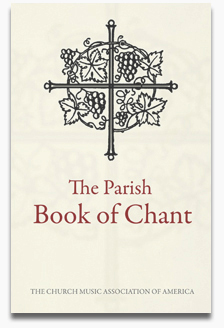Steven van Roode drew my attention to a wonderful online database of Notitiae Responses that has appeared online. These had been previously very hard to find. It was nearly the case that you had to be a PhD student digging through the postconcilar archives to find them. Now they are available to anyone. They are interesting because, as the official journal of the Vatican’s Congregation for Divine Worship, they provide insight into the mind of the Church following the Second Vatican Council.
There are some interesting points in here, such as the claim from 1966: “News is sometimes spread around about an imminent reform of the Order of Mass or a definitive reform of the whole Mass, which lacks a serious foundation. The liturgical restoration needs many efforts and years of study.”
Hmmm.
But already by that time, major changes were taking place, many of them much welcome. The most striking from a musical point view concerned the singing of the propers of the Mass. This was strictly forbidden in read or Low Masses before the Council. The result, however inadvertent and despite the constant promotion of the High Mass, was that the Low Mass substituted vernacular hymns. This was a serious problem from the point of view of the liturgical movement.
And truly, this made no practical sense. If a choir is there and can sing the propers of the Mass, why would it forbidden to do so, and yet singing a vernacular hymn become a practice that was not only not forbidden but proliferated widely? Indeed, this was the origin of what is called “the four-hymn sandwich.” This was not a “Vatican II” institution; it had preconciliar origins. In anything, Vatican II attempted to universalize the sung Mass so that the problem of popular vernacular hymns would fade and be replaced by sung Masses based on ordinary chants, dialogue chants, and proper chants.
It is for this reason that we can find this striking shift in Notitiae 1966: “Whether in a read Mass one or another part of the Ordinary (the Kyrie, the Gloria, etc.) or of the Proper (e. g. the Gradual, the Communion antiphon) can be sung? Resp.: In the affirmative.”
This was a dramatic change that reflected the Council’s wishes that Gregorian chant have first place at Mass. This is in keeping with one of the priorities of the liturgical movement and the continuation of the effort to refine the rubrics to fulfill Pius X’s wishes that the Mass itself by the source of sung texts at Mass.
This document has not been added yet to the database, but consider Notitiae 5 from 1969:
Query: Many have inquired whether the rule still applies that appears in the Instruction on sacred music and the liturgy, 3 Sept. 1958, no. 33: “In low Masses religious songs of the people may be sung by the congregation, without prejudice, however, to the principle that they be entirely consistent with the particular parts of the Mass.”
Reply: That rule has been superseded. What must be sung is the Mass, its Ordinary and Proper, not “something,” no matter how consistent, that is imposed on the Mass. Because the liturgical service is one, it has only one countenance, one motif, one voice, the voice of the Church. To continue to replace the texts of the Mass being celebrated with motets that are reverent and devout, yet out of keeping with the Mass of the day (for example, the Lauda Sion on a saint’s feast) amounts to continuing an unacceptable ambiguity: it is to cheat the people. Liturgical song involves not mere melody, but words, text, thought, and the sentiments that the poetry and music contain. Thus texts must be those of the Mass, not others, and singing means singing the Mass not just singing at Mass. [Notitiae 5 (1969) 406.]
This was the same year that the Novus Ordo Missae was promulgated. Here then, we can see the mind of the Church at work in a progressive way, fixing problems of the past and refining the structure toward the fulfillment of a hope of the ideal as versus the common practice.
It goes without saying that the problems became worse rather than better. This was no one’s official intention.
We are now living through yet another period of rule tightening in an attempt to bring about the sung Mass. Far more significant, however, are the publishing steps currently being take to actually make the sung Mass more possible and accessible. Truly, until a few weeks ago, there were very few resources even available to provide anything like a bridge from the current practice to the Graduale Romanum of option one.





